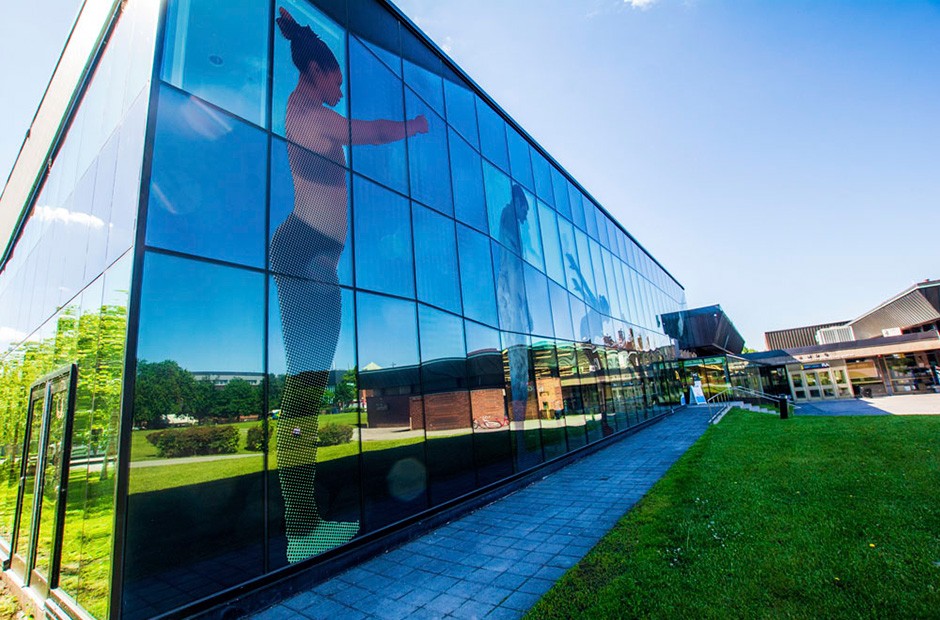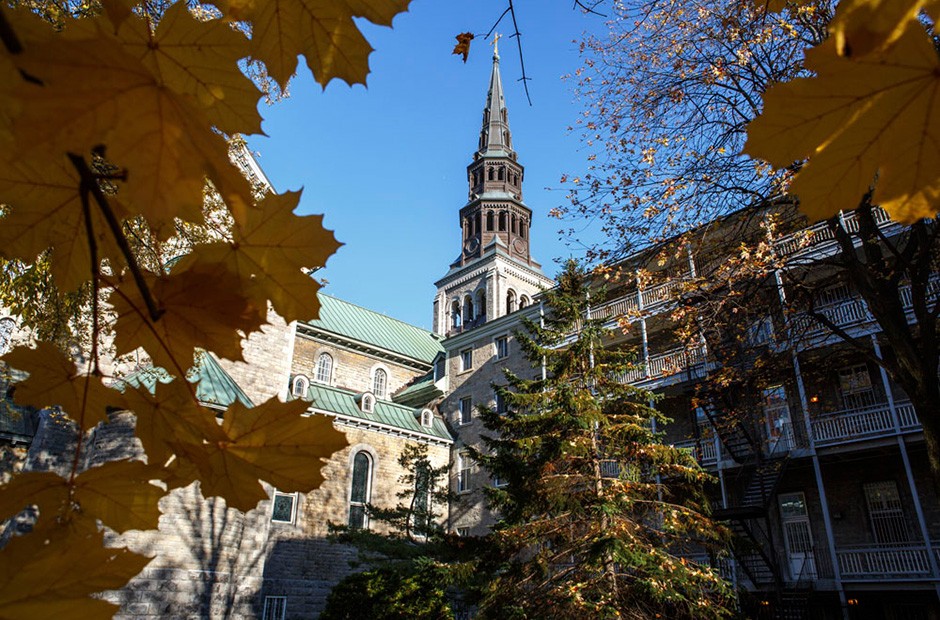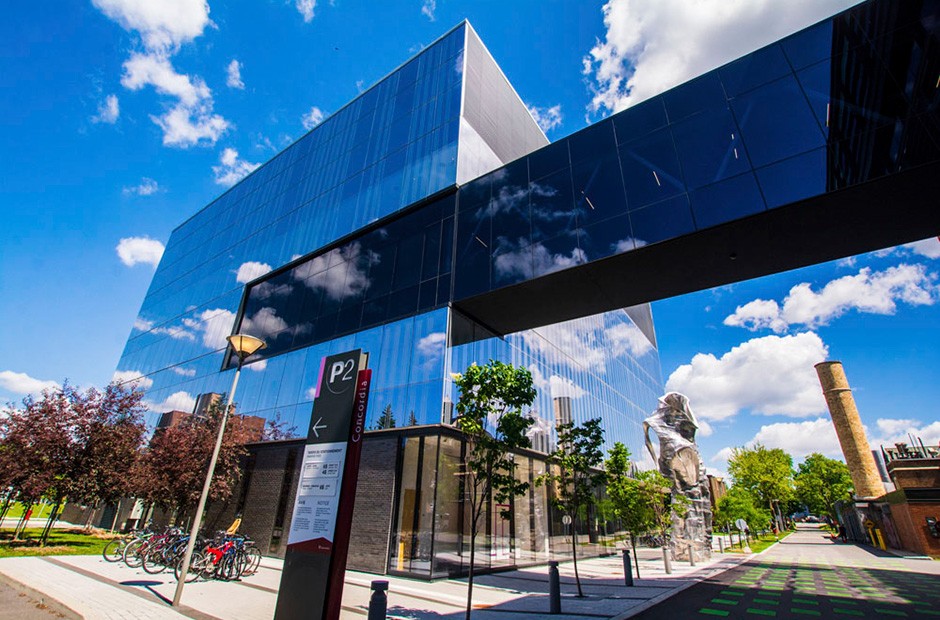A growing benefit
 The Concordia community brings a youthfulness, energy, joie de vivre and international flavour, helping solidify Montreal’s ranking as one of the top 10 student cities in the world.
The Concordia community brings a youthfulness, energy, joie de vivre and international flavour, helping solidify Montreal’s ranking as one of the top 10 student cities in the world.
Whether on the bustling Ste. Catherine Street or De Maisonneuve Boulevard in downtown Montreal’s Quartier Concordia, or on the vibrant stretch of Sherbrooke Street in Notre-Dame-de-Grâce (NDG), Concordia’s presence is undeniable. The university doesn’t just occupy space; it breathes life into the city.
Thousands of students fill the streets and public transportation, heading to classes, labs, the sports field or the library. The more than 50,000 individuals — including faculty, staff and visitors — fill cafés, shops and restaurants during the day, and bars, music venues and other sites at night. Many live in the surrounding housing. They bring a youthfulness, energy, joie de vivre and international flavour, helping solidify Montreal’s ranking as one of the top 10 student cities in the world.
The university also supports the city in ways that may be less evident, yet more quantifiable. According to Economic Impact Assessment of Concordia University, an independent report commissioned by the university and released in December 2023, Concordia generated nearly $2 billion in value added to the economies of Montreal and Quebec in 2022 alone.
“This assessment puts a dollar figure — a very significant one — on what we’ve long known: that Concordia alumni, researchers and students, as well as the university itself, provide our local economy with a major, quantifiable economic benefit,” says Concordia President Graham Carr.
Economic Impact Assessment breaks down these contributions into three principal areas: $925 million in human capital enhancement — increased productivity — through the university’s 179,000 graduates working in the province; $301 million through research conducted and disseminated by Concordia; and $763 million spent by Concordia as well as its students and visitors from outside Quebec.
Less subtle, however, is Concordia’s impressive physical presence.
Building for the future
Much of the university’s current public face is relatively new. It began to take shape in the late 1990s and, more dramatically, in the early 2000s, reflecting the growth of the university’s ambition, research profile, international reputation and more.
Since the merger of Loyola College and Sir George Williams University in 1974, not much on the university’s two campuses changed until 1999 apart from two new spaces — the J.W. McConnell Building on De Maisonneuve Boulevard across from the Henry F. Hall Building, and the Loyola Concert Hall in NDG — circa 1992.
 Leap, the public art embellishing PERFORM’s façade, was created by Montreal artist Adad Hannah. The large-scale, photo-based work on glass vibrantly depicts a series of 17 people engaged in various physical activities.
Leap, the public art embellishing PERFORM’s façade, was created by Montreal artist Adad Hannah. The large-scale, photo-based work on glass vibrantly depicts a series of 17 people engaged in various physical activities.
From 1999 until now, the changes are striking. That transformation was done with foresight. In the mid-1990s, the university’s leaders had to contemplate its future — and resolved to go big.
The first major step involved the NDG campus, which was underutilized. To study its options, the university created the Rector’s Advisory Task Force on the Revitalization of the Loyola Campus, chaired by Board of Governors member Lillian Vineberg-Goodman, BFA 83. The task force’s recommendation for Loyola — made in 1998 and soon accepted by the university — was to significantly invest in updating and adding facilities for the sciences, psychology, the performing arts, and communication studies and journalism.
Yet the board did not stop at Loyola. In 2000, it approved the $350-million Concordia Space Plan, a far-looking vision for both campuses.
“When somebody comes up with an innovative idea, Concordia makes it happen,” said Vineberg-Goodman in a recent interview with the university. “We were able to not only revitalize the Loyola Campus, but revitalize the entire university.”
Over the next decade, the university transformed Loyola from a sleepy suburban site to a thriving campus, thanks to the opening of a quartet of buildings, as well as major additions on Sir George Williams Campus.
Growth decisions
Michael Di Grappa, BA 84, Concordia’s vice-president of Services and Sustainability, was the university’s vice-rector of Services in the early 2000s. He recounts that in the mid-1990s the university’s government funding did not meet its needs.
“There was a crisis mentality at the time regarding space and university finances,” Di Grappa says. “That is when the university took a creative and innovative approach to space planning.”
Recommendations by the task force led to plans to build what would become the Renaud Science Complex. The building was financed entirely by university funds, the result of a $200-million bond issue, and philanthropy — specifically a lead gift by Richard J. Renaud, BComm 69, LLD 09.
The university was also able to move out of its many rental spaces and acquire other properties, including the Guy Métro Building, the site of the former York Theatre, the Faubourg Tower, a vacant lot at the corner of De Maisonneuve Boulevard and Guy Street, and the Grey Nuns site.
 The Grey Nuns Building offers a welcoming student and summer residence, a majestic library reading room, an early-childhood observation nursery, and a kitchen serving both campuses.
The Grey Nuns Building offers a welcoming student and summer residence, a majestic library reading room, an early-childhood observation nursery, and a kitchen serving both campuses.
“With these new properties, the university developed plans to provide state-of-the-art and expanded facilities for each faculty. Combined with some other major renovations, the total budget for these projects was more than $500 million,” Di Grappa says.
The driving force behind this vision, Di Grappa notes, was Concordia’s co-chancellor Jonathan Wener, BComm 71, who, at the time, was vice-chair of the Board of Governors and chair of the university’s real-estate planning committee.
“Jonathan always spoke of planning universities over a 100-year time frame, to always think about future needs and future generations of students, faculty and researchers,” he says.
“Without those properties added between 2000 and 2012, Concordia would not be what it is today. It would not have been able to grow nor attract leading faculty and researchers. It would not be as diverse; it would not have had the impact it has had on Montreal and its local communities at Sir George Williams and Loyola,” Di Grappa adds.
A catalyst for positive change
Concordia’s expansion over the past 25 years has positively impacted the NDG and Quartier Concordia neighbourhoods, as well as the City of Montreal overall, in several ways.
That starts with economic and cultural benefits, yet there’s much more. Concordia’s growth has also brought urban renewal through the transformation of old or underdeveloped areas.
“The university’s investments in green buildings and infrastructure improvements, such as LEED-certified buildings, have set an example of environmental responsibility,” says Di Grappa. “Concordia’s innovation and research centres have also boosted Montreal’s standing as a hub for technology, entrepreneurship and sustainable development.”
A vibrant Loyola deepens ties with the NDG community by providing spaces for public events, workshops and partnerships with community organizations.
 Opened in 2020, the Applied Science Hub houses laboratories and research spaces supporting research fields such as agriculture, health and sustainable development.
Opened in 2020, the Applied Science Hub houses laboratories and research spaces supporting research fields such as agriculture, health and sustainable development.
Finally, Concordia’s growth has elevated its reputation as a research and teaching institution, solidifying Montreal’s identity as North America’s best student city. Rooted in a bilingual city with strong ties to a vast number of industries, the university attracts top talent and investment, “helping Montreal to compete on the global stage as a centre for higher education and innovation,” Di Grappa says.
“Overall, Concordia’s expansion has been a catalyst for positive change, supporting economic growth, cultural vitality and urban development while fostering innovation and sustainability across Montreal.”
Discover how some of Concordia’s new and revitalized buildings have redefined the university’s presence in the city, turning urban areas into thriving hubs of creativity and collaboration at concordia.ca/timeline.

